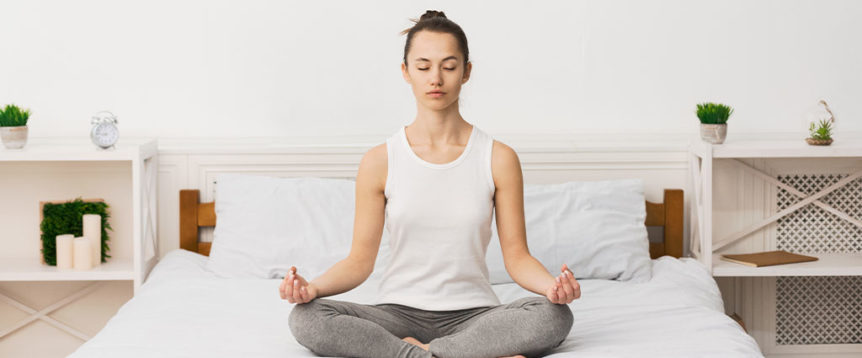Taking a few moments to simply be present each day can have lasting effects on your body and mind. Meditation has been shown to reduce stress and anxiety, promote emotional well-being, sharpen concentration and improve sleep. And now we can add gaffe-busting to the list. A recent study from Michigan State University found that meditation can help you be less error prone, too. Researchers discovered that just 20 minutes of meditation can enhance the brain’s ability to detect and pay attention to mistakes.
Just Breathe
To start reaping the benefits of meditation, all you have to do is breathe. “There are 8 billion different ways to meditate,” says Erin Rachel Doppelt, an international wellness speaker, meditation expert and host of the Wise Woman podcast. “But for a beginner’s level, specific practice would be to do the ‘yogic breath,’” she says. “It immediately energizes the body and relaxes the nervous system.”
Doppelt describes yogic breath as three distinct steps: inhale lower belly, inhale upper chest, long exhale release. She recommends doing three cycles to reap meditative benefits. “It literally takes just seconds and has the power to transform your day,”
she says.
Find Your Style
For more active or guided meditation, paid apps like Headspace or Calm—or the free Insight Timer app—offer a great way to get started, particularly if you’re new to meditation.
YouTube is another treasure trove for guided meditation practice, including a new musical/visual meditation series called Gratitude, which aims to pivot the brain away from stress and anxiety to focus instead on appreciation and contentment.
“Some people are looking for more peace in their hectic day,” says Gratitude series producer Frank Kilpatrick. “Meditation provides a dramatic counterpoint to the frenetic life that we lead. It’s a shift in your being for a bit.”
If you find it difficult to sit silently and breathe for long periods without the chatter in your head distracting you, consider starting with active meditation, which prioritizes mindful awareness of your movement and surroundings.
“When you practice active meditation—which really is light movement that includes yoga, or could for some people be chopping up vegetables or going gardening or running a couple of miles—then you can prepare your body for more silent, seated meditation,” Doppelt says.
Getting Started with Quiet Meditation
1. Find a quiet spot.
2. Sit cross-legged on the ground or on a comfortable mat or cushion. Keep your back straight but not too rigid.
3. Close your eyes.
4. Focus on your breathing. Inhale and exhale through your nose, slowly and completely. Be mindful of how the air is filling and then leaving your body.
5. Try to let other thoughts drift away.
6. If your mind wanders, return your focus to your breathing.
7. Start with just 2–3 minutes a day, and slowly work up to longer sessions.
Source: Meditation 101 Gaiam.com/blogs/discover

